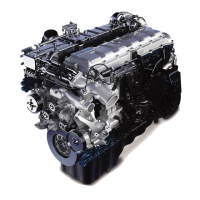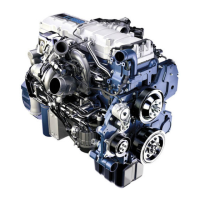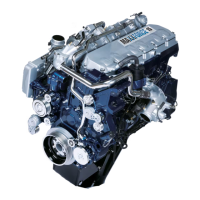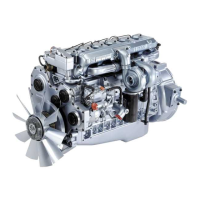446 APPENDIX B – TORQUES
Many conditions affect torque and the results of
torque applications. The major purpose in tightening a
fastener to a specified torque is to obtain tension in the
fastener (i.e., bolt, nut, etc.), which in turn develops
a clamping load which exceeds any possible loading
imposed on parts due to engine rpm or vibration.
Phosphate coated fasteners do not require oil
lubrication during assembly and torque application.
Reused fasteners, even if originally phosphate
coated, do require a light film of engine oil lubrication
to threads and under head area for proper torque
application.
Threads that are dry, excessively rough, battered or
filled with dirt require considerable effort just to rotate.
Then when the clamping load is developed or the bolt
tension is applied, the torque reading mounts rapidly
(due to thread friction) to the specified torque value.
However, the desired bolt tension and maximum
clamping effect is not achieved. This condition can
lead to failure of the fastener to maintain component
integrity. The proper bolt tension and clamping effect
can never be attained if the fastener is dry. The
fastener threads must have a film of clean lubricant
(engine oil) to be considered lubricated.
EGES-265-2
Read all safety instructions in the "Safety Information" section of this manual before doing any procedures.
Follow all warnings, cautions, and notes.
© 2009 Navistar, Inc.

